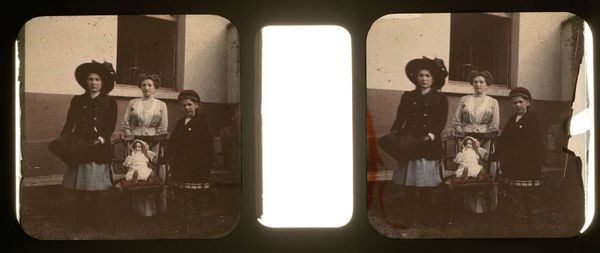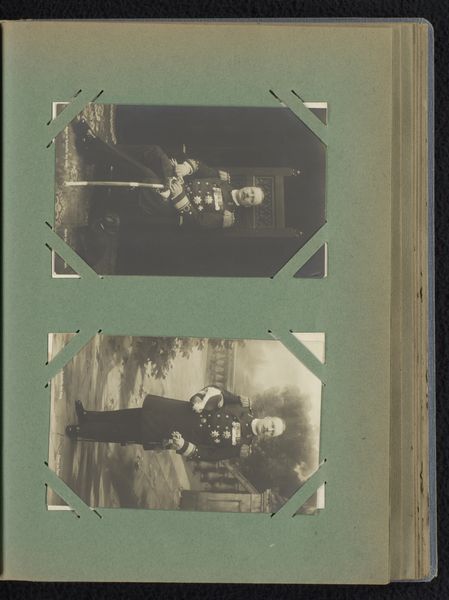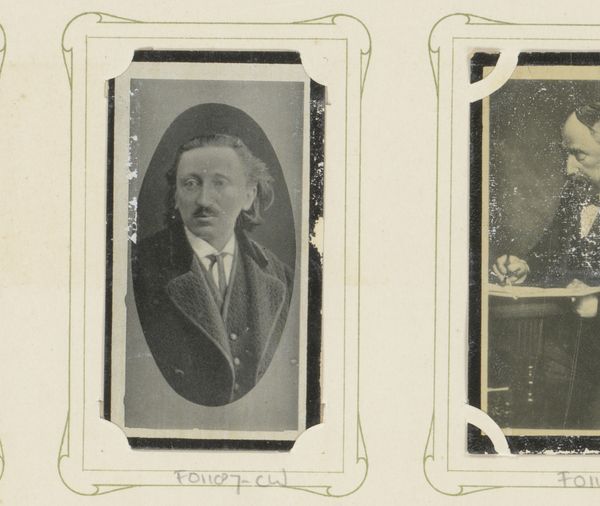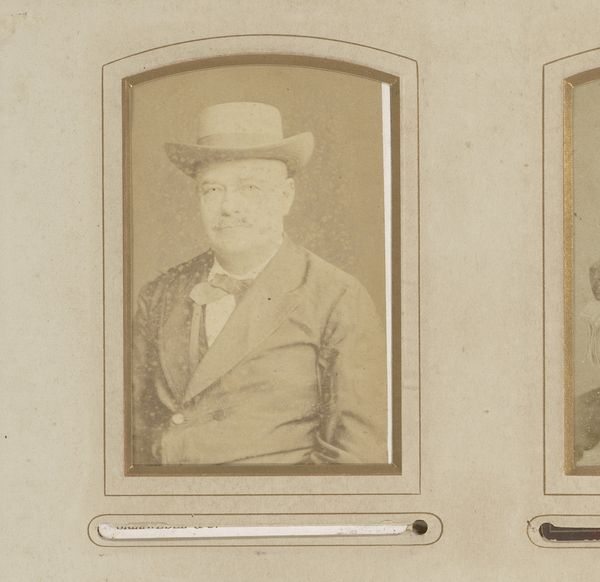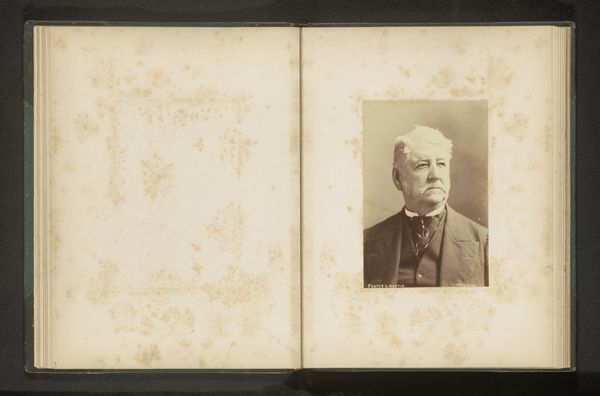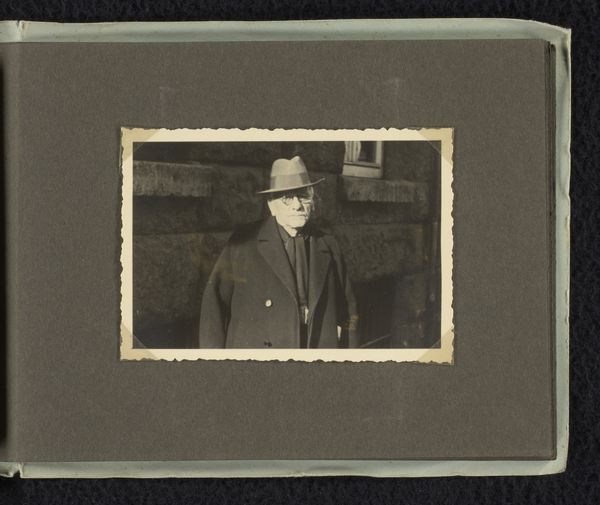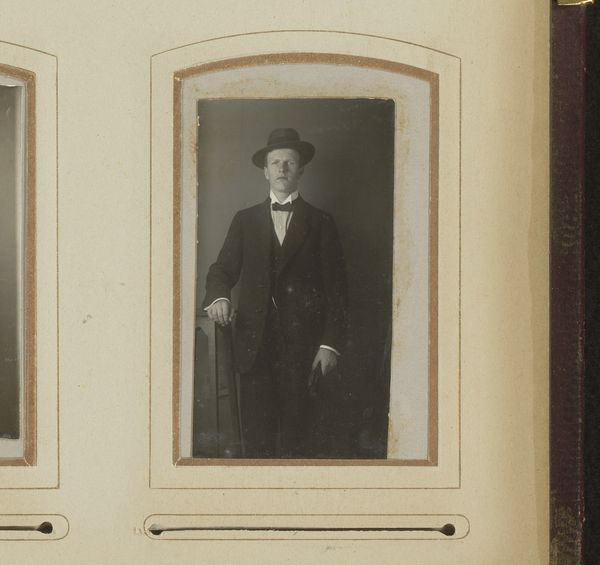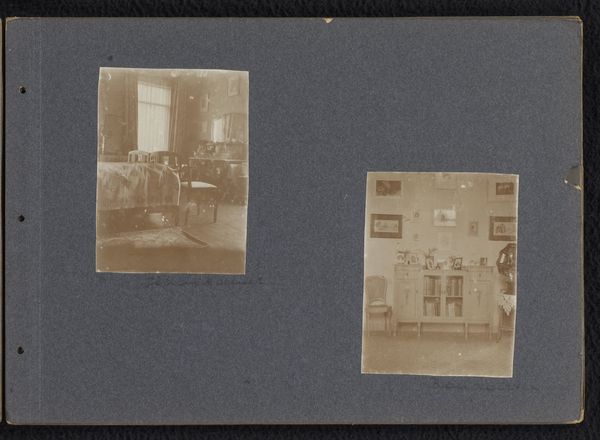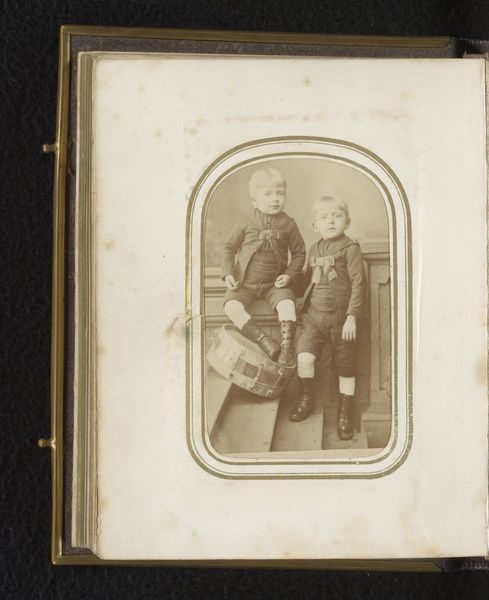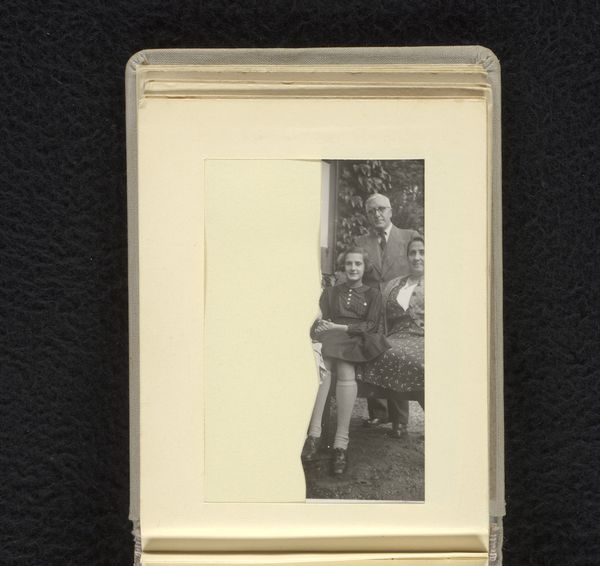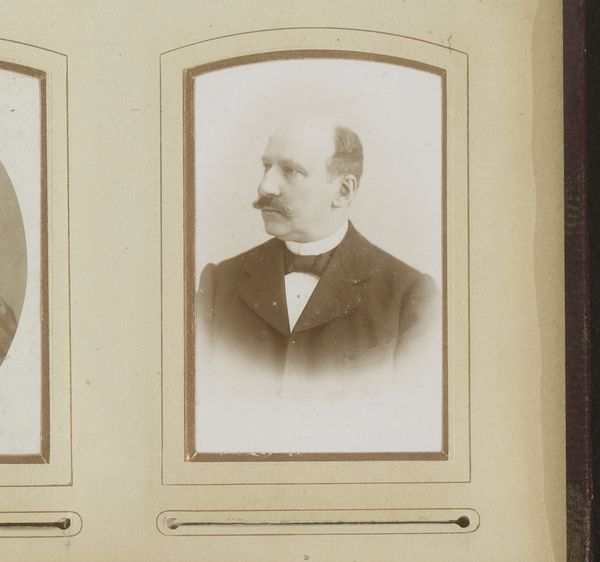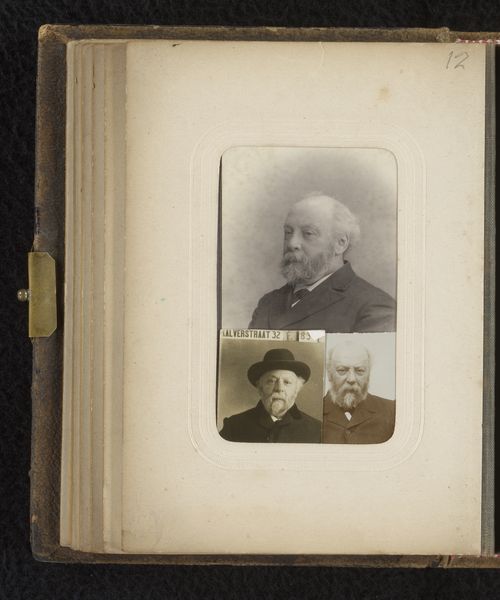
Portret van een onbekende man en vrouw, zittend aan een tafel 1907 - 1935
0:00
0:00
photography
#
portrait
#
still-life-photography
#
muted colour palette
#
photography
#
group-portraits
#
ceramic
Dimensions: height 75 mm, width 150 mm
Copyright: Rijks Museum: Open Domain
Curator: This remarkable photographic slide from between 1907 and 1935, attributed to Adolphe Burdet, captures an unknown man and woman seated at a table. It’s held here at the Rijksmuseum. What are your first impressions? Editor: Stark. The composition is dominated by this muted colour palette and what seems to be a doubling or mirroring of the subjects across two adjacent slides. It amplifies the static nature of the portrait. Curator: I’m immediately drawn to the staging. They’re positioned in front of what seems to be a makeshift backdrop, suggesting an attempt to create a sense of domesticity, maybe even bourgeois respectability, even if the reality of their circumstances may have been very different. Think of how such portraits historically have excluded marginalized subjects. Editor: The backdrop certainly adds to the artifice. Notice the geometry though. The repetition of vertical lines in the curtaining contrasts nicely with the patterned tablecloth and adds depth. The careful composition leads my eye around the subjects. Curator: Indeed. And consider the historical context. Group portraits were common, yes, but what power dynamics are at play here? How does the framing and setting contribute to our understanding of gender roles or social hierarchies in that era? The ceramic vase feels like it echoes traditional marriage still life symbolism of fleeting nature. Editor: That's an interesting perspective. However, technically, it is about the relationships between shapes. The cylinder of the vase against the flat planes of the table, and then echoed in the subjects’ clothing; this creates a visual harmony which surpasses the mere narrative. Curator: Yet isn't that visual harmony part of a wider strategy? This could be a study of the societal performance, and what’s so clever is that photography gives the illusion of a document while concealing its own manipulation. Editor: I grant you that reading is valuable, but let’s not diminish the importance of aesthetic form. By analysing how an artwork deploys visual tools—contrast, harmony, balance—we appreciate its essence. Curator: Fair enough. What's evident is its ability to serve multiple levels of engagement, sparking discussions around its construction and place. Editor: Well, ultimately, an image like this forces one to consider what photography does to human relationship and how our perceptions about form can shift understandings of social realities.
Comments
No comments
Be the first to comment and join the conversation on the ultimate creative platform.
